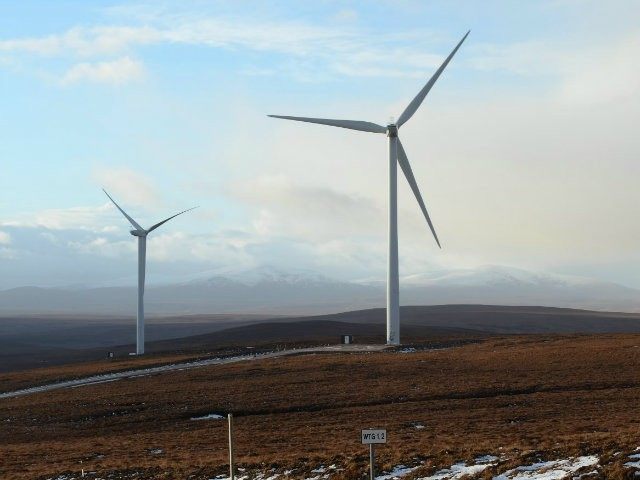The Scottish government is riding roughshod over planning regulations and scientific evidence by pursuing plans to “build a huge wind farm” across Scotland, Kate Mavor, the outgoing chief executive of the National Trust for Scotland has said. She criticised the Scottish National Party for adopting a myopic view on environmental policy, saying that renewable energy must not be the default policy to cure all ills.
Earlier this month, the National Trust for Scotland, the country’s biggest charity, joined eight others in accusing the Scottish government of ignoring scientific evidence and planning regulations in order to build more, larger wind farms.
Writing to The Times, the organisations, which included RSPB Scotland and Ramblers Scotland, said: “If we are to rebuild public confidence in the planning process and in the objectivity of Scottish ministers responsible for making such decisions, then we must find a way to demonstrate absolute transparency, impartiality and fairness.”
Yesterday, in an interview with The Times, Ms Mavor reiterated that they would like to see an independent planning commission set up. “We want an independent commission to hold the government to account, to follow its own policies. We need a watchdog. There doesn’t seem to be any sanction over policy on these things,” she said, adding that ministers’ breaches of planning law was “shocking”.
Drawing attention to two planned wind farm arrays in particular – Stonelairg wind farm on the edge of the Cairngorms National Park, and four planned farms in the Forth and Tay regions, off the east coast of Scotland – Ms Mavor accused the Scottish government of ignoring scientific advice that both posed a credible threat to local bird populations.
She said: “At Stonelairg, the environmental assessment by Scottish Natural Heritage recommended it should not go ahead.
“The development in the firths of Tay and Forth we thought equally disproportionate. The assessment of the turbines in the Forth is that 25 per cent of seabirds on the Isle of May and the Bass Rock would be gone. This is the sort of dramatic effect which has been disregarded. You can’t just say that renewable energy takes primacy over everything. We can protect the planet in so many ways that we are not doing. We are pursuing this policy, while not requiring people to use less domestic energy. The thing which would make the biggest impact is insulating homes.
“It’s about a hierarchy of things to do. And the first thing to do is not just build a huge big wind farm. Look at the things that make the biggest impact first.”
The offshore wind farms will consist of more than 300 turbine situated just off the breeding grounds for gannet, kittiwake, puffin and razorbill birds. Responding to the news that the projects had been given the go-ahead last October, the RSBP said that it was “inevitable” that birds would be killed by the wind farms, and that they would be “amongst the most deadly for birds anywhere in the world.”
Meanwhile the John Muir Trust, a conservation charity dedicated to the preservation of wild areas, has been actively campaigning against the Stonelairg development, which will see 67 turbines erected, each 135 metres tall. Last June they released a statement condemning the granting of planning permission for the project, saying: “The Stronelairg Wind Farm is a massive industrial development in the heart of the Monadhliath Mountains – Area 17 of the Core Areas of Wild Land map.
“This decision would suggest that the Scottish Government intends either to remove the Monadhliaths from the wild land map, or to render the entire map meaningless. We will continue to fight for wild land in Scotland”
They were backed by The National Trust for Scotland, who wrote to all their members asking them to support the John Muir Trust’s campaign. At the time, Kate Mavor said: “Although the proposed windfarm is not directly adjacent to any of our properties, it will be visible from large swathes of the Cairngorms national park and we are supporting this campaign on principle.
“We are not opposed to renewable energy developments by any means, so long as they are suitably located, are proportionate and subject to public scrutiny. We think there are serious questions to be answered about the way the Stronelairg windfarm was approved and what it might mean for Scotland’s wild lands.”
The National Trust insists that it is not opposed to wind power – it installed a wind turbine on its Fair Isle property back in 1982. Rather, it is opposed to “industrial” wind farms that deface Scotland’s natural landscapes.
And its 330,000 members, more than twice the membership of all Scotland’s political parties put together, appear to agree. Recent polling of its members revealed that they are keen for the trust to speak out against the proliferation of wind farms. Ms Mavor said the charity had been “excited” by the result, and re-energised by this new-found sense of purpose.
But the Scottish government have made it their ambition to produce the equivalent of 100 percent of Scotland’s power from renewable technologies by 2020. A Scottish government spokesman told The Times that a recent YouGov survey had shown 71 per cent of people supported the development of wind power.

COMMENTS
Please let us know if you're having issues with commenting.